Imagine stepping into your kitchen and harvesting fresh, home-grown mushrooms—an earthy treasure that transforms any dish with its unique flavor and texture. Whether you’re an experienced gardener or a curious novice, cultivating mushrooms at home can be a rewarding adventure that connects you to the wonders of fungi in an entirely new way.
Growing mushrooms at home isn’t just about adding an exotic twist to your culinary repertoire; it’s about understanding a fascinating organism that thrives in the hidden corners of your home. You’ll discover the satisfaction of nurturing these delicate yet resilient fungi, gaining skills that will enrich your gardening journey.
In this article, we’ll guide you through the essentials of mushroom cultivation, from selecting the right species to creating an ideal growing environment. You’ll learn practical tips for each stage of the process, ensuring that your home becomes a haven for these intriguing organisms. So, get ready to embark on an exciting foray into the world of mushrooms, where each step promises discovery and delight.
Select the Suitable Mushroom Type
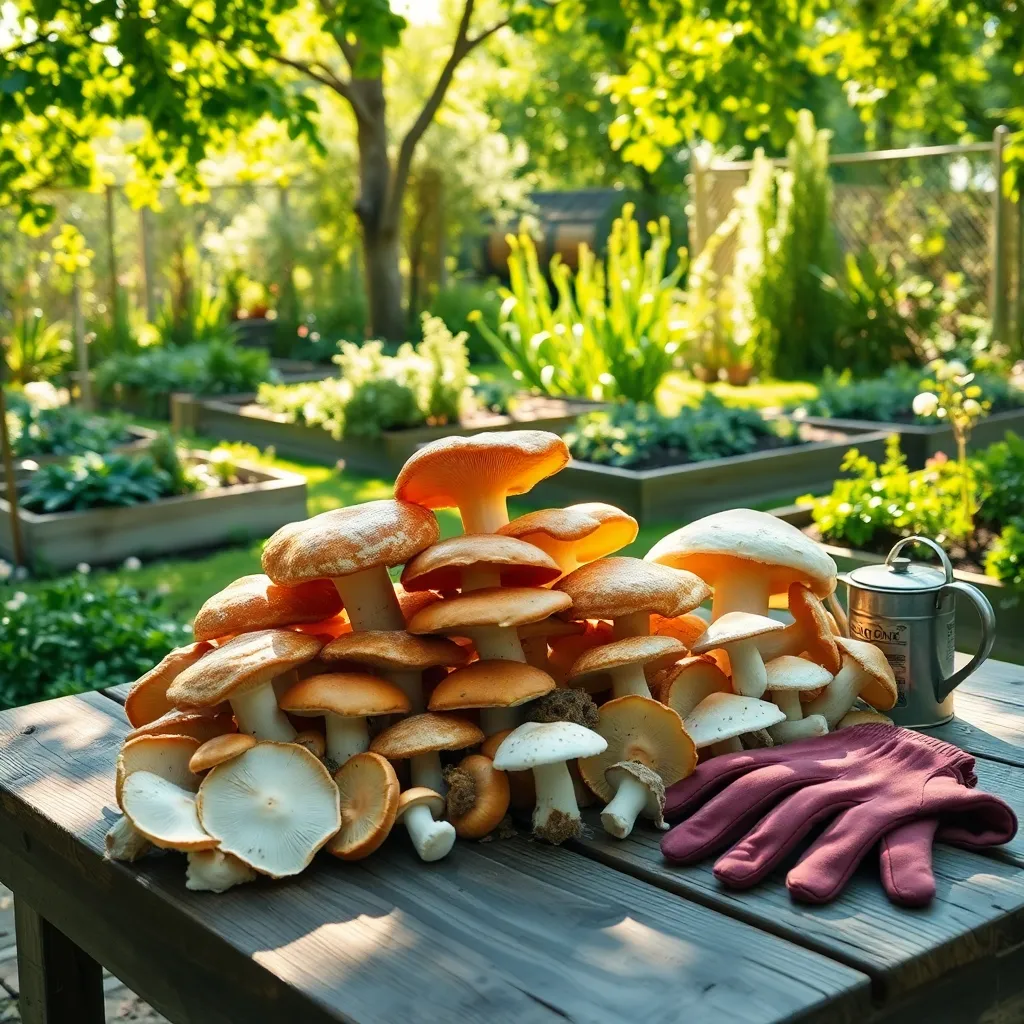
When choosing the right mushroom type to grow at home, consider varieties that match your skill level and available space. Beginners often find success with Oyster mushrooms due to their simplicity and adaptability to various growing conditions.
Oyster mushrooms thrive on a variety of substrates, including straw, sawdust, and even coffee grounds, making them versatile for home cultivation. Ensure the substrate is pasteurized to eliminate unwanted bacteria and fungi, providing a clean environment for your mushrooms to flourish.
For those looking for a slightly more advanced option, Shiitake mushrooms offer a rewarding experience with their rich flavor and texture. They typically require hardwood logs or sawdust blocks, and maintaining the right humidity and temperature is crucial for a successful harvest.
Advanced gardeners might enjoy experimenting with Enoki mushrooms, which require cooler temperatures and darker conditions to develop their delicate stems and caps. Using a controlled environment like a basement or a grow tent can help maintain these specific conditions, ensuring healthy growth and a bountiful yield.
Prepare the Growing Substrate
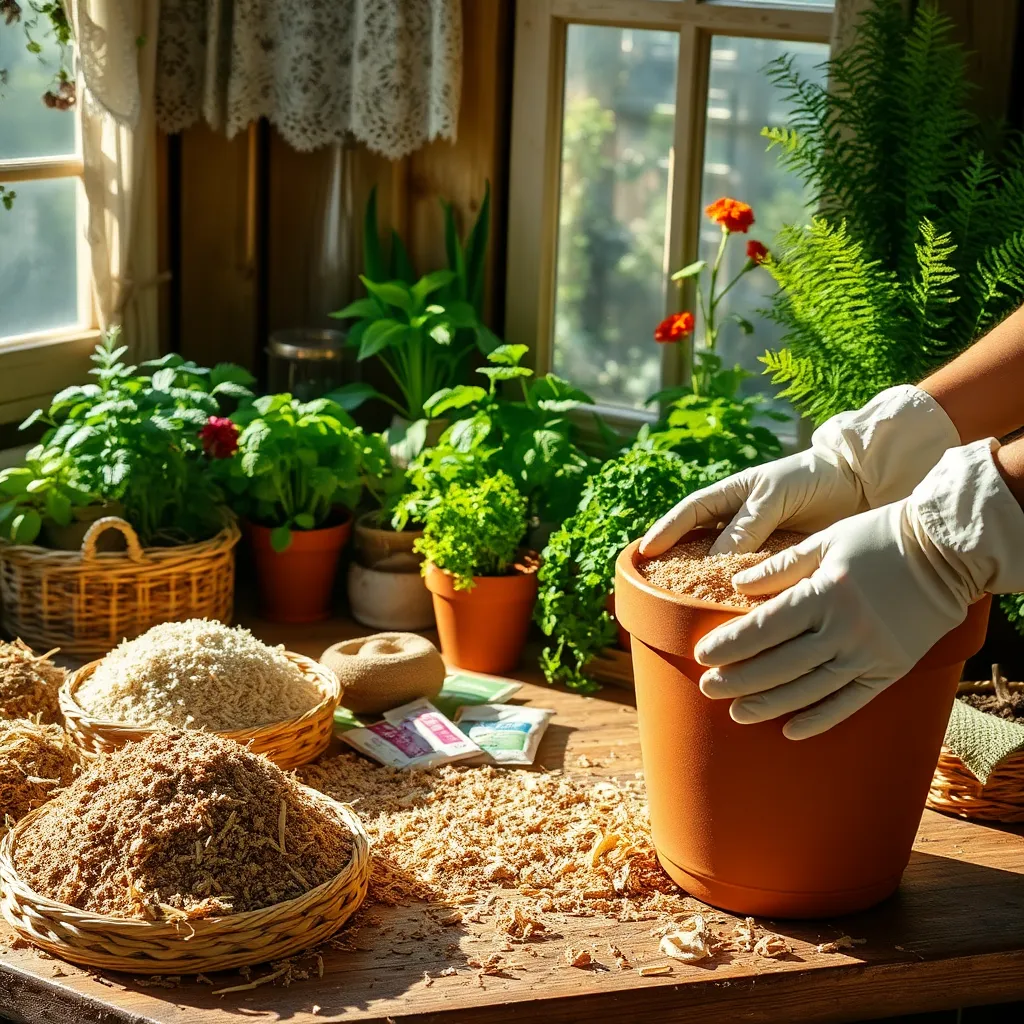
Once you’ve selected the suitable mushroom type, the next step is to prepare the growing substrate. The substrate acts as the food source for your mushrooms, so it’s crucial to use one that’s rich in nutrients and free of contaminants.
Common substrates include straw, hardwood sawdust, and even coffee grounds, depending on the mushroom species. Oyster mushrooms, for instance, thrive on straw or coffee grounds, while shiitake mushrooms prefer hardwood sawdust.
Before using your chosen substrate, it’s important to pasteurize it to eliminate any unwanted microorganisms. You can do this by soaking straw in hot water (160°F to 180°F) for about an hour, or by steaming sawdust for a similar amount of time.
After pasteurization, drain the substrate thoroughly to remove excess moisture. An overly wet substrate can lead to mold growth, so aim for a consistency that’s damp but not dripping wet.
For those interested in more advanced techniques, consider supplementing your substrate with additional nutrients. Adding materials like bran or gypsum can enhance the growth rate and yield of your mushrooms, but be sure to do so sparingly to avoid contamination risks.
Inoculate Substrate with Spores
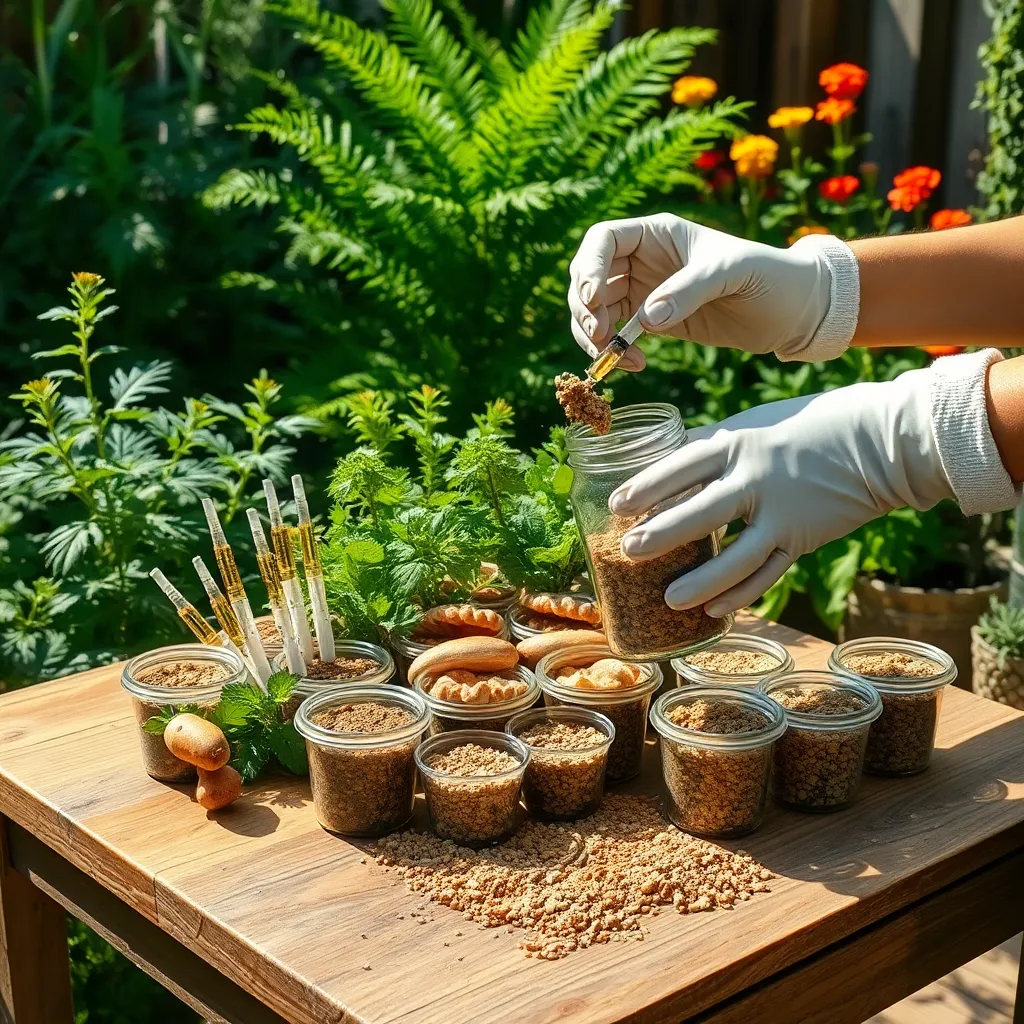
Once you have prepared your growing substrate, the next step is to inoculate it with mushroom spores. This process involves introducing spores into your substrate to begin the mushroom growing cycle. Use a sterilized syringe to inject the spores evenly across the substrate. Ensuring even distribution helps maximize your chances of a successful mushroom crop.
For beginners, it’s crucial to work in a clean environment to prevent contamination. Contaminants can hinder mushroom growth or introduce harmful pathogens. Advanced gardeners might consider using a glove box or a laminar flow hood to maintain sterility. These tools provide an extra layer of protection against unwanted bacteria or mold.
After inoculating your substrate, maintain the right environmental conditions to encourage spore germination. Mushrooms generally prefer a humid environment with temperatures between 65-75°F (18-24°C). Use a spray bottle to mist your substrate lightly, keeping it moist but not soggy. Proper moisture levels are essential for successful mushroom development.
Consider monitoring your substrate regularly to check for signs of contamination or unwanted pests. White, fluffy mycelium indicates healthy growth, while green or black spots suggest contamination. If you notice any issues, it may be necessary to remove affected areas to save the rest of your crop. Preventative care and regular monitoring can significantly improve your mushroom-growing results.
Maintain Ideal Growth Conditions
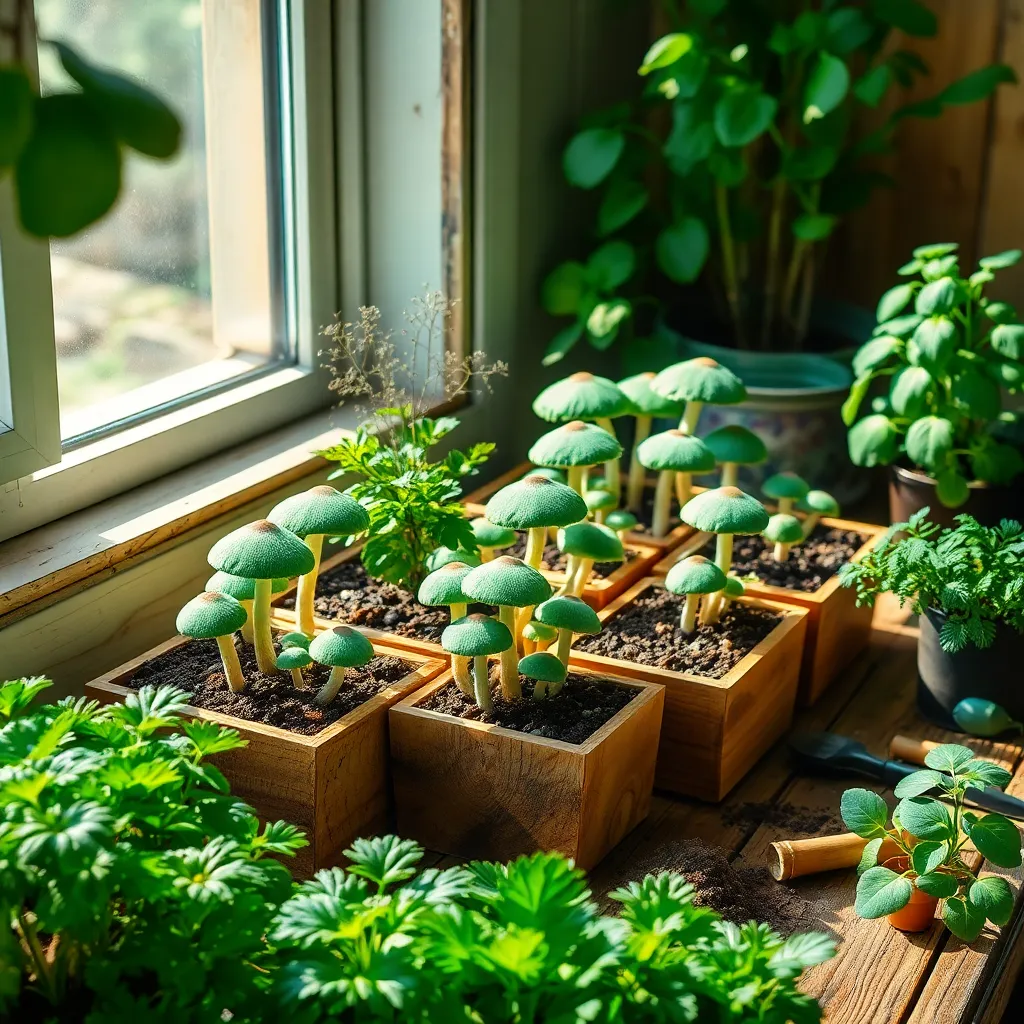
To maintain ideal growth conditions for your mushrooms, it’s crucial to understand their preference for specific temperature and humidity levels. For most varieties, aim to keep the temperature between 60-75°F and the humidity around 80-90% to mimic their natural environment.
Lighting plays a minimal role, as mushrooms do not need direct sunlight to thrive, but they do require a little indirect light to orient themselves. Use a low-wattage bulb or place your growing setup in a spot that receives ambient light for a few hours a day.
Avoid drastic temperature fluctuations by insulating your growing area, especially if you are using a basement or garage. You might consider using a small heater or fan to maintain a stable environment, as consistency is key to successful mushroom cultivation.
Regularly check the moisture content of your substrate, as mushrooms need a damp environment to thrive. Mist the substrate lightly with water if it begins to dry out, but ensure there is proper ventilation to prevent mold growth, which can be a common issue in overly moist conditions.
Advanced growers might experiment with different substrates, such as wood chips or straw, to optimize growth for specific mushroom types. Each substrate has its own unique benefits, so research which one works best for the mushroom species you’ve chosen to cultivate at home.
Harvest Mushrooms at Maturity
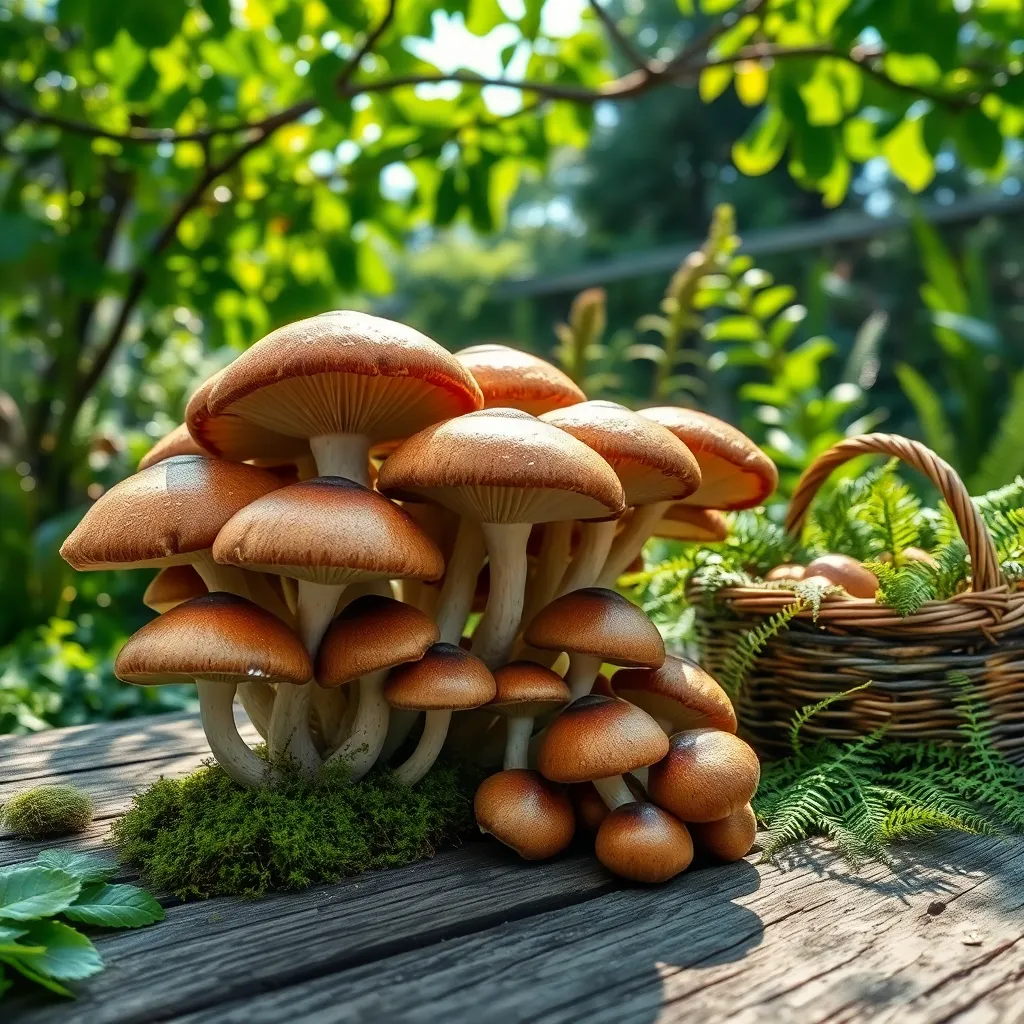
Knowing when to harvest your mushrooms is crucial for both flavor and texture. Typically, mushrooms should be harvested just before the veil breaks, which is when the cap is fully open, but the gills are still covered.
The most common mistake is waiting too long, which can lead to spore release and a less desirable taste. To avoid this, check your mushroom crop daily once they start to develop and pick them promptly when they reach maturity.
For beginners, a simple rule of thumb is to harvest when the cap is broad and slightly convex, without being flat. More experienced gardeners might use a soft brush to gently clean the mushrooms after picking, ensuring they are free of any substrate or debris.
Use a sharp knife or scissors to cut the mushrooms at the base, rather than pulling them, to avoid damaging the mycelium. This practice will help ensure that your growing medium remains intact for future harvests.
After harvesting, store your mushrooms in a paper bag in the refrigerator to preserve their freshness. For those looking to extend their harvest, consider drying or freezing excess mushrooms for later use in various dishes.
Conclusion: Growing Success with These Plants
As we wrap up our journey through the enchanting world of home mushroom cultivation, let’s revisit the five key relationship concepts that mirror the growth of these fascinating fungi. First, cultivating patience is crucial; relationships, like mushrooms, thrive over time with care and attention. Second, creating the right environment is essential for both mushrooms and relationships to flourish. Third, nurturing through consistent and thoughtful action strengthens bonds, just as regular maintenance ensures a healthy harvest. Fourth, the importance of communication cannot be overstated; understanding needs—be they of your partner or your growing mushrooms—is fundamental. Lastly, celebrating small victories reinforces positive growth and encourages continued effort.
Now, take the next step by applying these principles to your relationships. Start by identifying one area needing attention and commit to nurturing it, much like you would your budding mycelium.
Don’t forget to bookmark this article as a handy guide, ensuring you can easily revisit these insights whenever you need a reminder. Remember, relationships, like mushrooms, are a testament to patience, care, and the joys of growth. With consistent effort, your relationships can blossom into something truly remarkable. Here’s to thriving partnerships and bountiful harvests!

